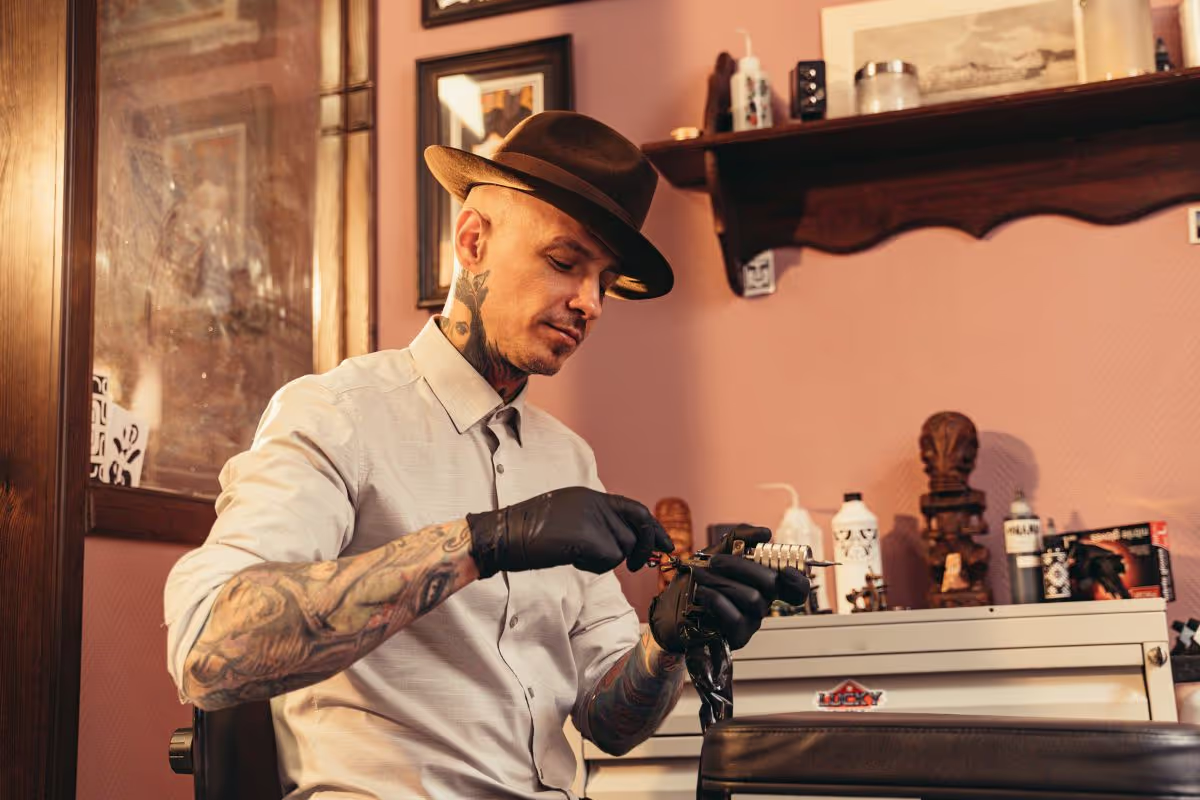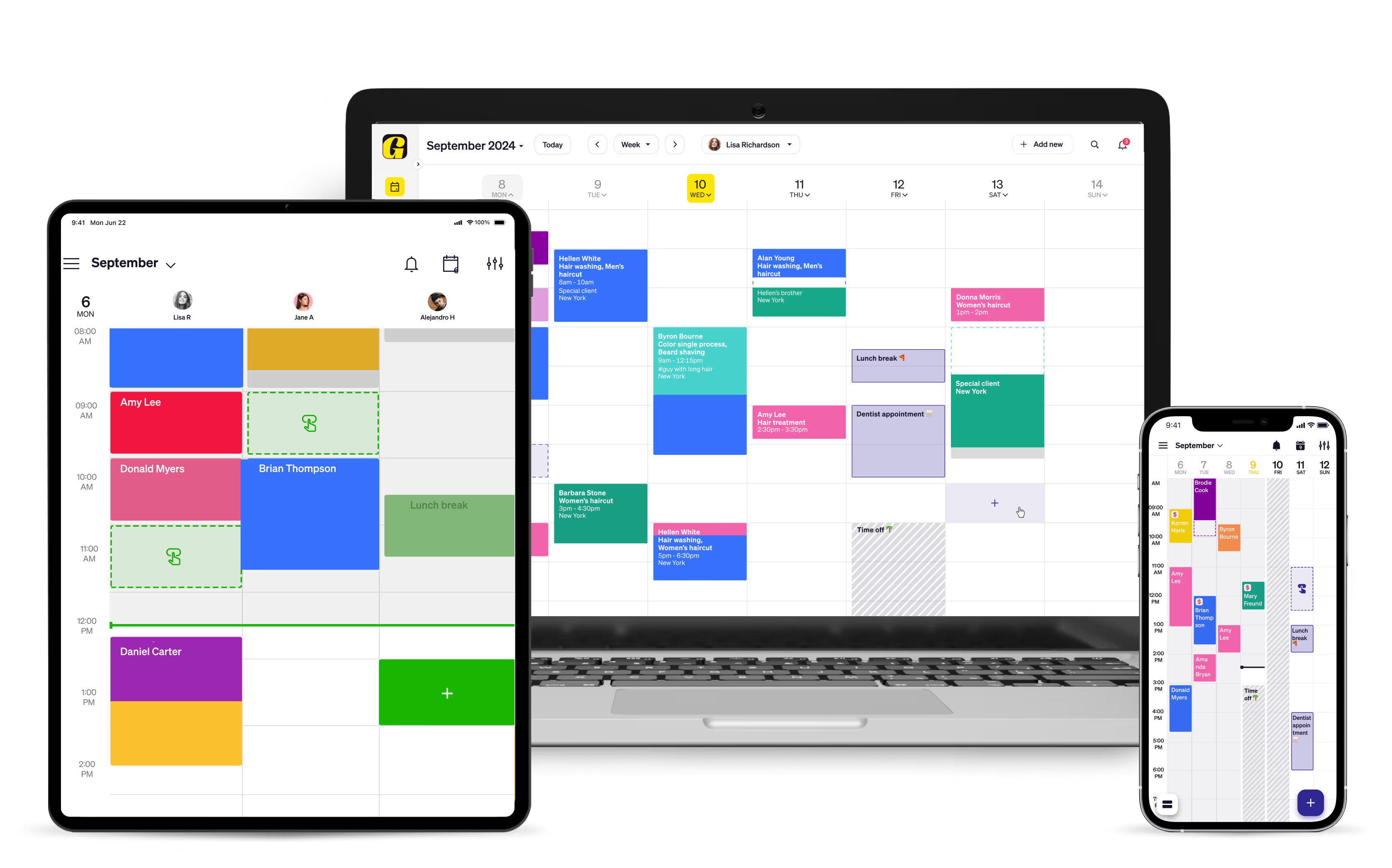
Tattooing is more than just art, ink and time. It’s a complex profession that blends artistic skill, technical precision, business savviness and great time management. From managing appointments and maintaining hygiene standards to building a loyal client base and mastering unique styles, today’s tattoo artists wear many hats. But beyond the artistry and hustle, one question comes up often: how much do tattoo artists actually earn in the U.S. in 2025?
In the past 5 years alone, the tattoo industry has reached approximately $1.5 billion in 2024 alone, displaying a 3.5% compound increase annual growth rate compared to 2018’s $1.2 billion.
If you're aiming to become one of the top-earning tattoo artists (some of whom make up to $5,000 a month or more), this is your exclusive look behind the scenes. We've analyzed internal data from thousands of tattoo artists who use Goldie, the appointment scheduling software that helps them avoid double bookings and stay fully organized.
With nearly 10,000 tattoo artists relying on Goldie to run their businesses, we dug into the numbers to uncover income patterns, earning potential, and the key factors driving revenue in the tattoo industry.
As of August 2023, 32% of Americans have a tattoo, 22% of them having more than one. Tattoos are far more than just black or colored ink on skin, they’re deeply personal symbols, each carrying its own meaning. For many people, particularly in the U.S., the most common reason for getting a tattoo is to honor or remember someone or something significant. In fact, 69% of tattooed individuals cite this as a key motivation. Whether it's a tribute to a loved one, a marker of a life-changing moment, or a reflection of personal growth, tattoos often hold powerful emotional significance and tell a story only the wearer truly understands.
But the reasons don’t stop there. Tattoos have become a compelling form of self-expression, allowing people to showcase their identity, beliefs, and creativity. Some use them to commemorate important milestones (such as births, losses, recoveries, or personal achievements) while others are drawn to their artistic or aesthetic appeal. For many, tattoos serve as a confidence boost or a way to feel more in tune with how they see themselves. They can also represent a sense of belonging, whether to a subculture, a community, or a shared tradition. And in a world where body art is more widely accepted than ever, sometimes getting a tattoo is simply about embracing a style that feels right.

Using Goldie as your tattoo shop’s all-in-one appointment scheduling and management app will help you increase your popularity and income, improve your time management, turning you from an entry-level tattoo artist to getting more clients.

According to the data, tattoo artists in the US who use Goldie to manage their business earn an average monthly income of $5,000. However, this number can fluctuate based on a variety of factors such as seasonality, experience, work environment, and geographical location.
Statistics show that the months around the Tax Refund Season tends to increase the demand in the tattoo industry, as people usually have more disposable income to spend on themselves. Based on a substantive research conducted by PubMed Central, the overall interest in tattoos in the US seem to increase in the late Spring, reaching its peak in July (online research trends and client behavior data).
You might be wondering “How much can I make in my state?” or “What’s the average monthly salary for a tattoo artist in my area?”. Luckily, we made that research for you. According Zippia’s research, the lowest average per month in 2025 comes up to $2,900 in Colorado, while the highest can reach close to $6,000 in Pennsylvania, but let’s break it down for each state, in order from lowest to highest:
The average salary of a tattoo artist in the US varies significantly based on their experience. While a first-year artist can charge $80-$150/hour, an experienced artist’s rate starts from $300/hour. Various relatable sources place the average annual salary of a tattoo artist somewhere between $39,000 and $61,000.
Breaking it down, the data shows that the average yearly salary on a national level is about $51,000, breaking it down into 4 main categories of tattoo artists:
Are you curious how much you can earn as a tattoo artist based on your costs, time and target earnings? Check out our Service Price Calculator to maximize your income and make informed decisions with every service you offer.
Various factors can impact the average revenue of tattoo artist. Some of the major factors that can significantly impact a tattoo artist’s income are:
In summary, while there is an average income reported in the tattoo industry, a tattoo’s artist’s income is highly depended on individual circumstances, their talent, and how successfully they can build their own brand and clientele.
As in every industry, evolution is a key pillar. Making sure that you never stop learning and growing is the foundation of your work. Here are a few tips to make sure that your portfolio and revenue are growing with you:
The overall data shows that, on average, tattoo artists can earn up to $5,000 per month depending, as we’ve seen so far, on their experience, geographical location, client base and popularity.
Whether you’re just starting out or already actively working as an established tattoo artist, one thing is for sure: tattooing is as much about skill and creativity as it is about smart planning and consistent client engagement. As the industry continues to grow and evolve, external tools can optimize schedules, reduce no-shows, and ultimately increase your earning potential - so don’t forget to check our appointment scheduling software to ensure you stay on top of your game at all times.
